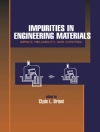Presents polymer-based fibre reinforced composite materials and addresses the characteristics of these widely used materials like low density and coefficient of thermal expansion, specific strength with better fatigue resistance and modulus. The topics discussed are laser-based material machining, high-speed robotic end milling and LFRP modeling, including definitions, features, machine elements (system set-up) as well as experimental and theoretical investigations. These investigations include effects of input variables (tool rotation speed, feed rate and ultrasonic power) on cutting force, torque, cutting temperature, edge quality, surface roughness, burning of machined surface, tool wear, material removal rate, power consumption and feasible regions. Further a detailed literature review on drilling polymer composites with a focus on delamination is included. Aspects such as delamination mechanisms, fabrication methods, the type of drilling process adopted by various researchers, cutting parameters employed during drilling, mathematical delamination modelling, effect of thrust force, spindle speed, thermal loads, tool wear, surface roughness, tool geometry and tool materials on delamination and hole quality are summarized. In addition an approach of digital image processing in delamination assessment completes the approach.
– Discusses Carbon Fiber Reinforced Plastics modern technologies for automated, highly productive and cost efficient processing.
– Great value for final undergraduate engineering courses or as a topic on manufacturing with FRPs at the postgraduate level as well as a useful reference for academics, researchers, manufacturing, mechanical and materials engineers, professionals in machining of FRPs and related industries.
Tabella dei contenuti
Circa l’autore
J. Paulo Davim, University of Aveiro, Aveiro, Portugal.












